-
 8 min. read
8 min. read
-
 Macy Storm
Macy Storm Senior Content Creator
Senior Content Creator
- Macy is a marketing writer with over five years of experience creating content for dozens of industries including food and beverage, home services, and education. She also specializes in creating SEO and PPC content. Her work has been featured by Search Engine Journal, HubSpot, Entrepreneur, Clutch, and more. In her free time, Macy enjoys trying new crafts and reading comic books.
Programmatic advertising is expected to account for 90,2% of digital display ad dollars. This method of advertisement is rapidly growing, and if you’re not using it, you’re missing out on a prime opportunity to grow your business online.
You can get started with four types of programmatic advertising, including:
P.S. Want to get the latest tips and tricks for marketing your business online? Subscribe to our email newsletter! Our long list of services helps you grow every aspect of your business with marketing strategies that are proven to increase bottom-line metrics like revenue and conversions. In the past 5 years, we’ve managed more than 14.9 MILLION transactions across our client base.Time to Level Up Your Sales

Programmatic advertising definition
Programmatic advertising, also known as programmatic marketing, is the process of doing real-time buying and selling of ad space through an automated bidding system.
This advertising form enables companies to purchase ad spots from different publishers and apps to reach their target audience on sites and apps they visit.
4 types of programmatic advertising
Now that we’ve covered the programmatic advertising definition, let’s move on to the different types of programmatic advertising. When it comes to programmatic vs. traditional advertising, programmatic advertising offers more ad choices and opportunities to drive more sales and revenue for your business.
Here are the four main types of programmatic advertising options:
1. Real-time bidding
Fast facts: Open to the public, ads can appear on any site First on our list of types of programmatic marketing is real-time bidding. With this option, advertising spots are open to the public — any company can bid on any location. This option is known as the open marketplace.
It’s called “real-time bidding” because this auction process happens instantly in real-time. These advertising spots are sold through an open auction with bidding. The company that bids the highest for the spot gets it.
The company that wins the spot is not charged their highest bid amount, but rather, $0.01 higher than the second-highest bidder for the ad spot. The biggest pitfall with this, however, is that you don’t know where your ads appear. You risk your ads showing up in places you don’t want them to appear.
2. Private marketplace
Fast facts: Invite-only basis, know what sites your ads appear on Next on our list of types of programmatic advertising is a private marketplace. Private marketplace operates on an invite-only basis. So, with this setup, a publisher sets aside their premium ad spots for a select list of advertisers.
Private marketplace is typically used by websites and publications with massive amounts of reach, like Forbes. These platforms have dozens of companies vying for advertising spots, so they can afford to set some spaces aside for top-notch advertisers. With a private marketplace, you always know where your ads appear.
It takes away the mystery of ad placement you get with the real-time bidding option.
3. Preferred deals
Fast facts: Choose ad spots before they go on the public market, the publisher and advertiser must agree on advertising terms beforehand Next on our list of types of programmatic advertising is preferred deals. Preferred deals, as the name suggests, enables advertisers to choose ad spots before they’re made available on private marketplaces or real-time bidding auctions. If you choose the preferred deals, you pay a fixed price for ad space, known as spot buying.
When an advertiser wants to pay for a spot on a publisher’s site, both parties agree on pricing, targeting, and more before claiming the ad space. This option is a great one if you want to get a preview of the available ad space from an advertiser.
4. Programmatic guaranteed
Fast facts: Negotiations for ad spots are on a one-on-one basis, doesn’t require bidding Last on our list of types of programmatic advertising is programmatic guaranteed. This option takes the traditional approach to media buying. Advertisers and publishers negotiate the terms of ad space on a one-on-one basis — this setup means there’s no bidding involved.
With this option, advertisers get to choose their price, who they target, and how frequently their ads appear. This option offers the most control to advertisers, but it comes at a price. You need to have a bigger budget if you want control over your ad’s exact placement and cost.
Programmatic ad formats
Now that you know the different types of programmatic marketing let’s move on to the programmatic ad formats.
When you craft your programmatic ad, you can take advantage of numerous format options, including:
Display ads
Display ads are the visual ads you see in the header, footer, or sidebar of a website. You create these ads through display networks like Google and Microsoft. This programmatic ad format is one of the most common options companies use to reach leads on third-party sites.
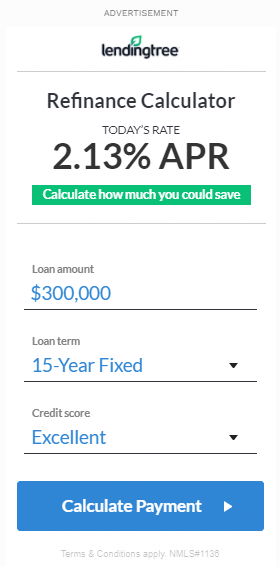
Video ads
Next, we have video ads, which are programmatic ads that feature video footage, as the name suggests. These ads can appear in three places:
- Instream: Video ads will run as an advertisement before a user watches a YouTube ad. These ads are in the video player.
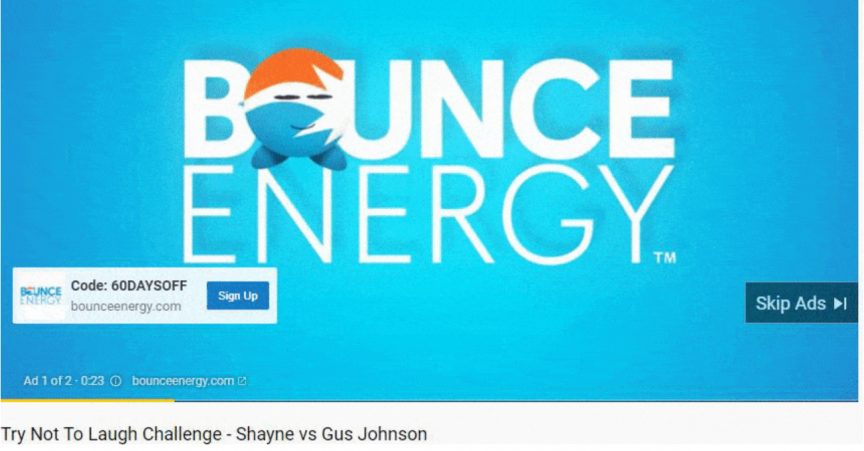
- Outstream: These video ads can appear between two articles or in the midst of an article. These videos can also display as pop-ups or drop-down videos.
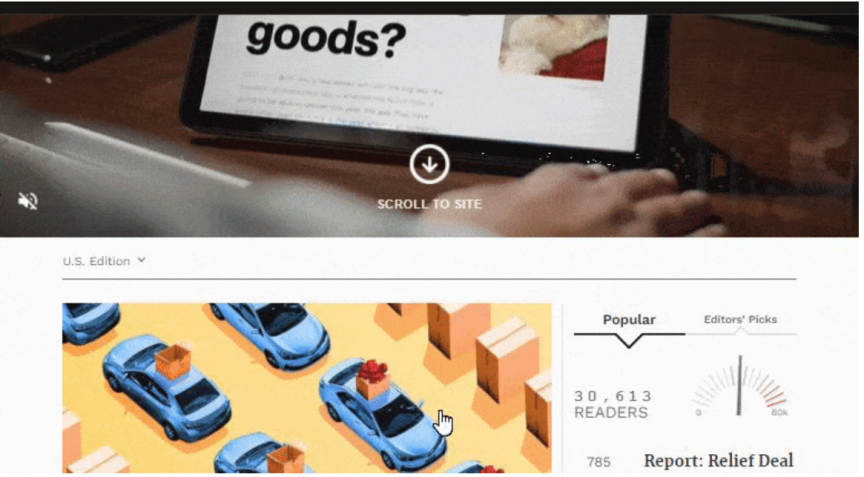
- In-display: These ads appear in search results for videos or in the recommended videos panel on YouTube.
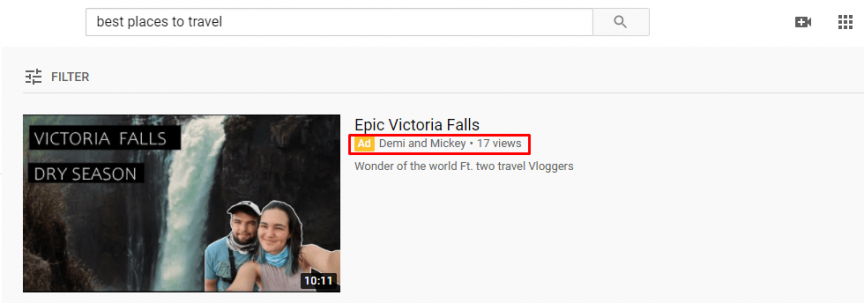
Native ads
Next on our list of programmatic ad formats is native ads. Native ads are ads that can appear on any part of a third-party website. Advertisers choose which impression they want to buy and the price they pay.
Advertisers purchase these spots through a demand-side platform (DSP). On the other hand, publishers offer their supply of ad spots through a supply-side platform (SSP). 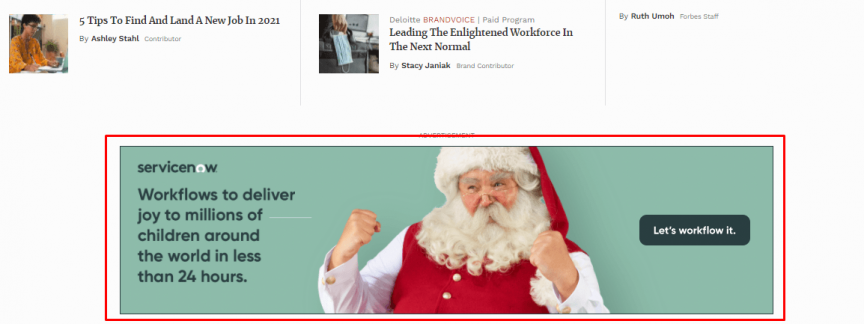 These ads can appear in the header, footer, or sidebar.
These ads can appear in the header, footer, or sidebar.
They can also appear as:
- In-feed ads
- Paid search units
- In-article ads
- Promoted listings
- Sponsored content
…and more!
Voice ads
Next on our list of programmatic ad formats is voice ads. Voice ads, also known as audio ads, are advertisements that appear in audio content. These audio platforms include:
- Podcasts
- Digital radio
- Music streaming services
Some popular platforms for this content include Spotify, Pandora, Amazon audio ads, and BBC.
3 quick tips for doing programmatic advertising
Now that you have all the information about programmatic advertising, you’re ready to launch a campaign! To help your campaigns succeed, check out these three quick tips:
1. Know your market
If you want to be successful with programmatic advertising, you need to know your market. You must know who you’re trying to reach with your ads and how you want to reach them. This information is vital to know because it determines how you run your campaign.
If you don’t know who you’re targeting with your programmatic ads, you won’t know the best platforms to reach them. Determine who’s in your target audience by identifying information like gender, age, and income. When you have all this information, you can determine which platforms they’re likely to visit so you can display your ads on those websites.
2. Set goals
Any time you run an advertising campaign, you want to set goals. Setting goals ensures that you know what you’re trying to achieve so that you can set your campaigns up for success. You can set numerous goals, including:
- Increase brand recognition
- Increase leads
- Increase sales
- Increase phone calls
- Increase website visits
Think about your programmatic advertising strategy and what you want to achieve with it in the long run. Thinking about the scope of your campaign will help you set goals that enable you to succeed.
3. Make sure your ads appear in the right place
When you do programmatic advertising, you must ensure that your ads appear in the right place. As you saw in the types of programmatic marketing section, there are multiple ways your ads can appear on websites. When they do appear, you want to ensure it’s a valuable site for your business.
Whenever you run ads, you must keep your brand’s image and reputation in mind. You don’t want your ad to appear on a less than credible site because it makes your brand seem uncredible. Track where your ads appear, so you can ensure your ads are only showing on websites that will positively impact your campaign.
We foster and form long-term partnerships so that your business has long-term results.
Over 90% of WebFX clients continue partnering with us into year 2 of their campaign.
Hear from Our Happy Customers

Get started with programmatic marketing today
In this guide, we covered:
- The programmatic advertising definition
- Types of programmatic marketing
- Programmatic ad formats
- Quick tips for driving success with your programmatic advertising strategy
After learning all this information, you may feel overwhelmed, and that’s okay! That’s where the experts at our programmatic advertising company can help. We have a team of over 500 marketing specialists that know the ins and outs of programmatic advertising and can help you craft a campaign that drives results.
In the past five years alone, we’ve driven over $6 billion in sales and over 24 million leads for our clients. Ready to get started? Contact us online or call us today at 888-601-5359 to speak with a strategist about our programmatic advertising services!
-
 Macy is a marketing writer with over five years of experience creating content for dozens of industries including food and beverage, home services, and education. She also specializes in creating SEO and PPC content. Her work has been featured by Search Engine Journal, HubSpot, Entrepreneur, Clutch, and more. In her free time, Macy enjoys trying new crafts and reading comic books.
Macy is a marketing writer with over five years of experience creating content for dozens of industries including food and beverage, home services, and education. She also specializes in creating SEO and PPC content. Her work has been featured by Search Engine Journal, HubSpot, Entrepreneur, Clutch, and more. In her free time, Macy enjoys trying new crafts and reading comic books. -

WebFX is a full-service marketing agency with 1,100+ client reviews and a 4.9-star rating on Clutch! Find out how our expert team and revenue-accelerating tech can drive results for you! Learn more
Try our free Marketing Calculator
Craft a tailored online marketing strategy! Utilize our free Internet marketing calculator for a custom plan based on your location, reach, timeframe, and budget.
Plan Your Marketing Budget

Maximize Your Marketing ROI
Claim your free eBook packed with proven strategies to boost your marketing efforts.
Get the GuideTry our free Marketing Calculator
Craft a tailored online marketing strategy! Utilize our free Internet marketing calculator for a custom plan based on your location, reach, timeframe, and budget.
Plan Your Marketing Budget





